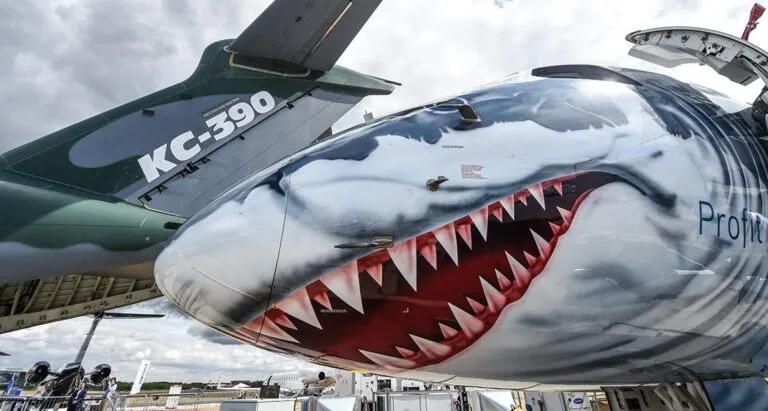Data from IBA’s Insight intelligence platform shows that, by June 2022, global flight volumes had recovered to 83% of the level in June 2019, and that domestic volumes had recovered further, to 87%. On a regional basis, transatlantic air traffic between North America and Europe is at 92% of June 2019 volumes, but Asia lags behind at 70%.
The macro-economic environment is presenting a range of growing challenges to the aviation sector. Excess levels of stimulus, such as quantitative easing, industry support from governments, and wider forms of aid, coupled with fragile and time-sensitive supply chains, have led to a significant rise in inflation. In the Eurozone alone, inflation levels have jumped from 5.1% in January 2022, to 8.6% in June.
Other challenges include a strong US Dollar and high oil prices – two factors that historically have seldom combined – and staffing shortages as the industry recovers, which is causing airports to cap flights, and airlines to cancel them. Conversely, this is leading to demand exceeding supply, giving airlines greater pricing power, with IATA data showing that 64% of airlines have reported increased fare levels year on year.
IBA believes that new aircraft orders, which would normally be driven by factors including high oil prices and the growing cost of emissions offsetting, may be held back by a range of headwinds. These include high levels of OEM backlogs, their slow production capacity, weaker airline balance sheets, as well as wider macro-economic challenges.
We are confident that the recovery in global air traffic will continue, but at a lower rate given the higher costs, lower capacity, and wider economic challenges the industry is grappling with.
Looking at capacity and forecast growth in more detail, IBA outlined how Q3 2022 (July – September) airline capacity has been reduced by 16% as airlines and airports cut schedules. In Europe and North America, this has been driven by staffing challenges, and in Asia Pacific by Covid-19, which continues to drive travel restrictions. However, Q3 2022 capacity is still well ahead of Q3 2021 levels and is closing the gap to Q3 2019 numbers. In Latin America, Q3 2022 is just 5% below Q3 2019, and in North America it’s just 11% behind.
IBA outlined how airline capacity growth will slow and plateau over Q4 2022 and Q1 2023, but still remains significantly ahead of winter 2021/2 levels. Looking at regions specifically, winter (Q4 / Q1) capacity in North America is forecast to be just 4% behind 2019 levels, whereas in Asia Pacific, it will lag at 25% behind.
Overall, IBA forecasts that passenger traffic will recover to pre-pandemic levels by the end of 2024, with an average annual growth rate of 3.2%.
Looking specifically at cargo traffic, for which demand peaked in Q2 2021, freight-tonne kilometres for the same period in 2022 are expected to be 8% lower. However, the outlook for Q3 is more positive, with reduced airport disruption and fewer lockdowns in China, and IBA forecasts a 2.6% annual average growth rate in cargo traffic from 2022 to 2024.
IBA has outlined a range of measures relating to aircraft utilisation and storage. While average sector lengths for narrowbody and widebody aircraft returned to pre-pandemic levels in Q1 2021 and Q1 2022 respectively, utilisation levels remain lower at 80%.
The number of aircraft in storage has fallen from a peak of over 16,000 in April 2020 to under 6,000 June 2022. IBA forecasts that the number of aircraft in long-term storage will stabilise at around 4,000. IBA insights demonstrate that it is predominantly younger aircraft being returned to service as the average age of those remaining stored has increased from between 12-18 years at the height of the pandemic, to between 15 – 20 years in June 2022.
IBA forecasts that aircraft delivery levels will continue to ramp up, but against a backdrop of supply chain challenges. IBA estimates that the Airbus A320neo will remain the most delivered family of aircraft in 2022 at over 450 aircraft, followed by the Boeing 737 MAX at over 350.
Narrowbody aircraft market values are recovering based on strengthening demand and firming delivery pricing. Boeing 737 MAX values have now recovered well, with base and market values only four percentage points apart, but still slightly lag behind the A320neo at just one to two percentage points, and the A321neo, which is at parity. Similarly, the divergence between market and base values of current-generation widebodies such as the Boeing 787-9 and the Airbus A350-900 has also reduced.
IBA has also presented an analysis of aircraft orders placed at the Farnborough Air Show. There were around 480 orders announced, compared to almost 1,400 at its 2018 edition and around 800 at the Paris Airshow in 2019. The orders were dominated by Boeing, representing 62% of all commitments, with Airbus ranking second with around 18%.
You can download presentation slides for the report here.





